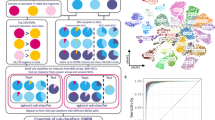Abstract
The long-term prognosis for clear cell renal cell carcinoma (ccRCC) is dramatically altered by the development of metastatic recurrence. However, there are very few indicators that can predict which patient will develop a recurrence. MicroRNAs regulate many cellular processes and have been shown to be associated with cancer development and recurrence. More recently it has been shown that microRNA genes can be epigenetically modified in cancer, resulting in aberrant silencing of microRNA genes with tumor suppressor functions. In this study, we show that two genes encoding for hsa-miR-9 are significantly hypermethylated in ccRCC tumors compared with adjacent normal tissues (P-value <0.001 for both miR-9-1 and miR-9-3) resulting in decreased expression, and that the methylation of these genes was more significant in DNA obtained from the primary tumor for patients who developed a recurrence (P-value: 0.012 and 0.009 for miR-9-1 and miR-9-3, respectively) than in tumors from nonrecurrent patients. Furthermore, methylation of miR-9-3 was significantly associated with an increased risk of recurrence (hazard ratio: 5.85, 95% confidence intervals: 1.30–26.35) and high methylation levels of either miR-9-1 or miR-9-3 resulted in a significant, nearly 30-month decrease in recurrence-free survival time (P-value: 0.034 and 0.007 for miR-9-1 and miR-9-3, respectively). Our results demonstrate that hsa-miR-9 is involved in the development of ccRCC while also having a role in the development of metastatic recurrence.
This is a preview of subscription content, access via your institution
Access options
Subscribe to this journal
Receive 50 print issues and online access
$259.00 per year
only $5.18 per issue
Buy this article
- Purchase on Springer Link
- Instant access to full article PDF
Prices may be subject to local taxes which are calculated during checkout


Similar content being viewed by others
References
Bandres E, Agirre X, Bitarte N, Ramirez N, Zarate R, Roman-Gomez J et al. (2009). Epigenetic regulation of microRNA expression in colorectal cancer. Int J Cancer 125: 2737–2743.
Budhu A, Jia HL, Forgues M, Liu CG, Goldstein D, Lam A et al. (2008). Identification of metastasis-related microRNAs in hepatocellular carcinoma. Hepatology 47: 897–907.
Garzon R, Calin GA, Croce CM . (2009). MicroRNAs in cancer. Annu Rev Med 60: 167–179.
Hsu PY, Deatherage DE, Rodriguez BA, Liyanarachchi S, Weng YI, Zuo T et al. (2009). Xenoestrogen-induced epigenetic repression of microRNA-9-3 in breast epithelial cells. Cancer Res 69: 5936–5945.
Iorio MV, Ferracin M, Liu CG, Veronese A, Spizzo R, Sabbioni S et al. (2005). MicroRNA gene expression deregulation in human breast cancer. Cancer Res 65: 7065–7070.
Jemal A, Siegel R, Ward E, Hao Y, Xu J, Thun MJ . (2009). Cancer statistics, 2009. CA Cancer J Clin 59: 225–249.
Laios A, O'Toole S, Flavin R, Martin C, Kelly L, Ring M et al. (2008). Potential role of miR-9 and miR-223 in recurrent ovarian cancer. Mol Cancer 7: 35.
Lehmann U, Hasemeier B, Christgen M, Muller M, Romermann D, Langer F et al. (2008). Epigenetic inactivation of microRNA gene hsa-mir-9-1 in human breast cancer. J Pathol 214: 17–24.
Lewis BP, Burge CB, Bartel DP . (2005). Conserved seed pairing, often flanked by adenosines, indicates that thousands of human genes are microRNA targets. Cell 120: 15–20.
Lujambio A, Calin GA, Villanueva A, Ropero S, Sanchez-Cespedes M, Blanco D et al. (2008). A microRNA DNA methylation signature for human cancer metastasis. Proc Natl Acad Sci USA 105: 13556–13561.
Lujambio A, Esteller M . (2007). CpG island hypermethylation of tumor suppressor microRNAs in human cancer. Cell Cycle 6: 1455–1459.
Luo H, Zhang H, Zhang Z, Zhang X, Ning B, Guo J et al. (2009). Down-regulated miR-9 and miR-433 in human gastric carcinoma. J Exp Clin Cancer Res 28: 82.
Omura N, Li CP, Li A, Hong SM, Walter K, Jimeno A et al. (2008). Genome-wide profiling of methylated promoters in pancreatic adenocarcinoma. Cancer Biol Ther 7: 1146–1156.
Pantuck AJ, Zisman A, Belldegrun AS . (2001). The changing natural history of renal cell carcinoma. J Urol 166: 1611–1623.
Yanaihara N, Caplen N, Bowman E, Seike M, Kumamoto K, Yi M et al. (2006). Unique microRNA molecular profiles in lung cancer diagnosis and prognosis. Cancer Cell 9: 189–198.
Acknowledgements
Supported, in part, by National Institute of Health Grant R01 CA098897.
Author information
Authors and Affiliations
Corresponding author
Ethics declarations
Competing interests
The authors declare no conflict of interest.
Additional information
Supplementary Information accompanies the paper on the Oncogene website
Supplementary information
Rights and permissions
About this article
Cite this article
Hildebrandt, M., Gu, J., Lin, J. et al. Hsa-miR-9 methylation status is associated with cancer development and metastatic recurrence in patients with clear cell renal cell carcinoma. Oncogene 29, 5724–5728 (2010). https://doi.org/10.1038/onc.2010.305
Received:
Revised:
Accepted:
Published:
Issue Date:
DOI: https://doi.org/10.1038/onc.2010.305
Keywords
This article is cited by
-
The clinical and prognostic value of miR-9 gene expression in Tunisian patients with bladder cancer
Molecular Biology Reports (2019)
-
RETRACTED ARTICLE: Dual roles of miR-374a by modulated c-Jun respectively targets CCND1-inducing PI3K/AKT signal and PTEN-suppressing Wnt/β-catenin signaling in non-small-cell lung cancer
Cell Death & Disease (2018)
-
The Role of DNA Methylation in Renal Cell Carcinoma
Molecular Diagnosis & Therapy (2018)
-
TGF-β1-induced epithelial–mesenchymal transition in lung cancer cells involves upregulation of miR-9 and downregulation of its target, E-cadherin
Cellular & Molecular Biology Letters (2017)
-
Diabetic nephropathy: serum miR-9 confers a poor prognosis in and is associated with level changes of vascular endothelial growth factor and pigment epithelium-derived factor
Biotechnology Letters (2017)



